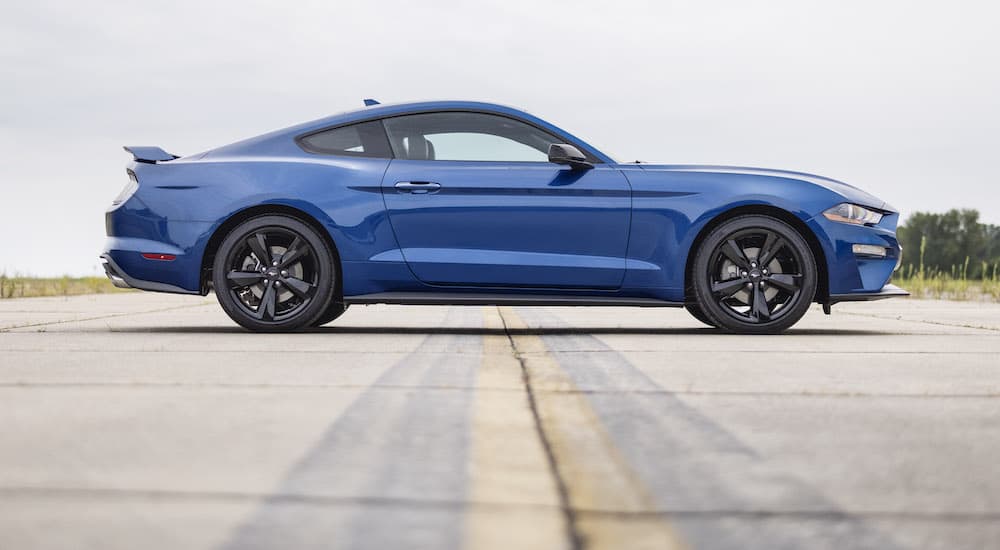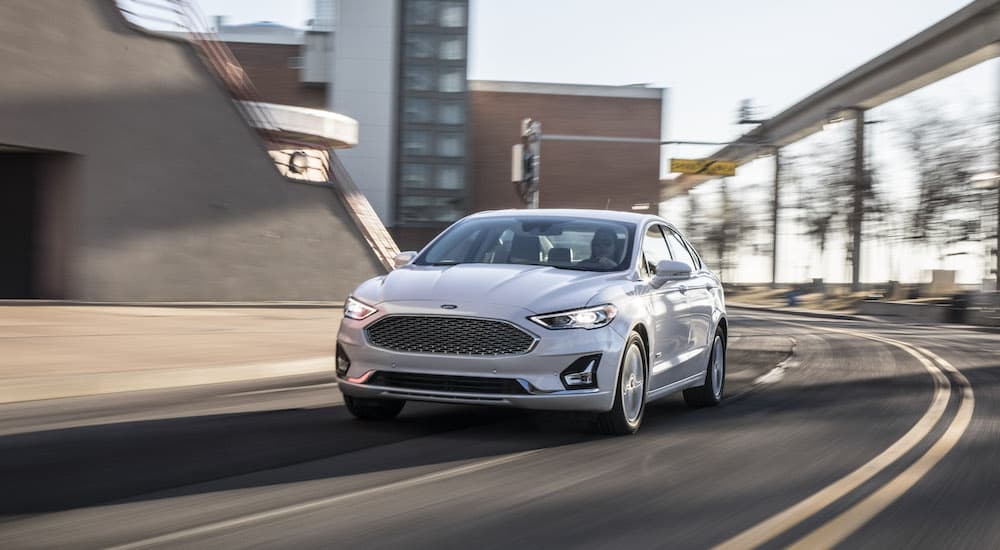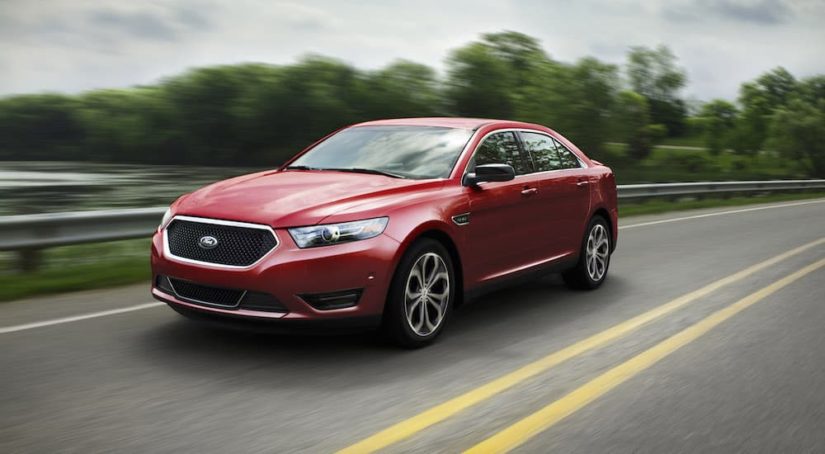From my perspective, shopping for a car is all about answering questions: you start with big-picture questions about what type of vehicle will work best for you and narrow down your options with more specific and precise questions until you find exactly what you need. One of the most important big-picture questions to answer is whether you should choose a new, used, or Certified Pre-Owned (CPO) model. Each of these options has its own pros and cons, with warranty coverage being one of the biggest advantages. Before you head to a used Ford dealership, figuring out what will work best for you is vitally important.
While most manufacturers have a pretty straightforward CPO program, Ford’s is a little more complicated, which can be either a good or bad thing depending on your preferences. The biggest drawback to this, as I see it, is that it introduces an extra layer of complexity that can make things a bit confusing. It’s really not too complicated, but it definitely requires a little extra work to figure out just what you need. The good news is that I’m going to help you navigate these options and explain what each of them has to offer to help you figure out which is right for you.
Ford Options: New, Used, and Blue Advantage
Before we jump into what you can get with each of these options, let’s take a moment to go over some definitions. A new Ford is just what it sounds like: a brand-new model, fresh from the factory, which has never had a previous owner or been used on a lease. With a used vehicle, you get a model that had at least one previous owner or was leased before you got to it–these are generally the least expensive options.
For its CPO models, Ford actually has two different levels available, which are both a part of the Ford Blue Advantage program: Gold Certified and Blue Certified. The Gold Certified vehicles are the most comparable to CPO models that you’ll find from other manufacturers; they have the strictest requirements and come with the best warranty coverage. A Blue Certified Ford is just a step above other used options; they can have more mileage on them, be older than Gold Certified models, and come with less warranty coverage (I’ll get into more details below).
New Ford Warranty Protection
You’d expect a brand-new Ford vehicle to have the best warranty coverage possible from the manufacturer, and you’d be correct. In addition to the fact that you get the best peace of mind with a new vehicle, since it’s never had a previous owner doing questionable things to it, a new model is also the one with the greatest support from the manufacturer. That being said, the tradeoff is, of course, the highest price; in general, a brand-new Ford will cost you more than a comparable pre-owned option.

Warranty protection on new Fords is excellent and includes:
- 3-year/36,000-mile Bumper-to-Bumper Warranty
- 5-year/60,000-mile Powertrain Warranty
- 5-year/100,000-mile Diesel Engine Warranty
- 8-year/100,000-mile Hybrid/EV Component Warranty
Every model comes with that bumper-to-bumper coverage, and the engine/powertrain is covered by the applicable option from the other three, with diesel and electric models having the best overall protection. You also get additional coverage for the seatbelts and protection for corrosion, but the engine and overall warranty are really what’s most important and comparable when looking at your options. I should mention there are also a number of extended warranty plans available when you buy a new Ford, but the value of those is highly debatable and beyond the scope of this article.
Used Ford Warranty Protection
General, run-of-the-mill used Ford models might have some warranty coverage, but it depends on a couple of important factors. Essentially, the new vehicle warranties I listed above are good for the period of time or mileage limit indicated, regardless of the owner. So if you buy a used Ford that’s only two years old and has just 30,000 miles on it, then you’d still have up to one year or 6,000 miles left on the original bumper-to-bumper warranty (assuming nothing’s happened to void the warranty). This all relies on someone driving less than the length of the warranty coverage before selling their vehicle, and remember that the coverage is “whichever comes first” for the age and mileage.
In addition to this, some dealerships might offer their own warranty coverage on a used model, but this varies wildly from one dealer to another and is only valid at the dealer that offered it. You may also be able to choose an extended warranty plan when buying a used model, but again this depends a great deal on the specifics of the vehicle you’re looking at. Overall, warranty coverage on a used model isn’t guaranteed, so look closely at what you’re getting with any used vehicle you’re interested in.
Ford Gold Certified Benefits
The first of two CPO options as part of Ford’s Blue Advantage program, Gold Certified vehicles have to meet the highest standards set by Ford. This includes passing a 172-point inspection, and all of these models have to be less than six years old and have fewer than 80,000 miles on them. If you look at CPO programs from other manufacturers, this is generally pretty comparable, though details will vary from one brand to another. Gold Certified vehicles all come with a decent amount of warranty coverage backed by Ford:
- 1-year/12,000-mile Comprehensive Warranty
- 7-year/100,000-mile Powertrain Warranty
Before you ask, yes, that looks like longer powertrain coverage than new vehicles with a standard (not a diesel or hybrid) engine, and on paper, that does seem to be the case. The very important thing to note, however, is that this powertrain warranty starts from when the vehicle was originally sold new, not from when you buy it as a Gold Certified model. So if you found a Gold Certified vehicle that is five years old and has 75,000 miles on it (as an example), that vehicle would only have two years and 25,000 miles of powertrain warranty coverage. That’s certainly better than nothing, but you need to look at the details of any vehicle you’re interested in to see just how much protection it really has.

Ford Blue Certified Benefits
The other CPO option from Ford is a Blue Certified vehicle, which is still going to be in great shape, but the requirements for Blue certification aren’t as high. These vehicles must be less than ten years old and have fewer than 120,000 miles on them, so you can see there’s a pretty big difference between Blue and Gold. Plus, Blue Certified vehicles only have to pass a 139-point inspection. As you’d expect, they have much less warranty coverage than the Gold Certified models:
- 90-day/4,000-mile Comprehensive Warranty
That’s it, no powertrain warranty unless there’s anything remaining from when it was sold as new, which is possible depending on its age and mileage. This is still better than a vehicle being sold by some guy across town that offers you no peace of mind, no warranty protection (unless any of the new-vehicle coverage remains), and no recourse if you end up with a lemon. That’s why I said this is a step above a typical used vehicle, but the warranty coverage certainly isn’t anything too special.
Choose the Right Option for Your Needs
You can see that new vehicles and Gold Certified models are definitely your best options if warranty protection is important to you, plus those are going to be in the best shape overall. Of course, they’ll also be the most expensive options, so your budget is going to have a big impact on choosing which vehicle is right for you. If affordability is your primary goal, then a Blue Certified or basic used model will probably be your best bet. As always with car shopping, look at your needs and choose the right option for your situation.



